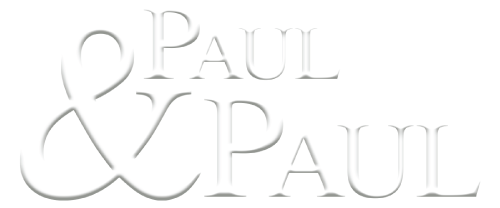Why There is No Protection for a Poor Man’s Patent: Intellectual Property Lawyer in Philadelphia PA Explains
Bringing a new invention to market is expensive. Most inventors do not get paid or earn money for the initial work in creating, testing, and prototyping an invention. In fact, these steps often cost an inventor money in supplies, manufacturing, and testing. Once these steps are done, patenting a product for market can start to cost an inventor significant time and money. Some inventors look for shortcuts to save money through what is known as a “poor man’s patent.” But, our Philadelphia intellectual property lawyer in Philadelphia, PA, knows that this is a big mistake that can cost an inventor more time and money and the rights to his or her invention.
At Paul & Paul, our experienced Philadelphia patent attorneys have over 170 years of combined experience handling nearly all aspects of intellectual property law, including patent applications, prosecution, and defense. We have represented clients throughout many different states, federal courts, and internationally in the U.S. Patent and Trademark Office, the U.S. International Trade Commission, the U.S. Copyright Office, and the U.S. Federal Trade Commission. If you have an invention that you want to protect, learn how we can help you during a free call with our experienced patent lawyers.
What is a Patent?
A patent is an intellectual property right held by the patent applicant (an inventor) and issued by the U.S. Patent and Trademark Office. Inventions are patented. A patent is a formal acknowledgment that gives the patent holder exclusive rights to market, sell, or license the invention. The term of a patent is generally 20 years, with a few exceptions.
Any other person, business, or other entity using the patented product within that 20-year term without permission of the patent holder would be violating the patent. The formal patent is what gives an individual that right.
What is a Poor Man’s Patent?
A poor man’s patent is not a formal acknowledgment by the U.S. Patent and Trademark Office. Instead, a poor man’s patent is when an individual puts certain information about an invention such as a prototype, description, schematics, photographs, and other identifying information into an envelope and has it mailed to himself or herself.
The theory is that a postmarked envelope creates an official date of when the invention was made and established. Thus, would-be inventors believe that this will give them rights to the patent to enforce against others or insulate themselves from claims.
The Problem with a Poor Man’s Patent
While in theory, a poor man’s patent sounds like a viable way of establishing who came up with an invention first, our intellectual property attorneys know many issues with a poor man patent. Most notably that it simply does not work.
History of a Poor Man’s Patent
The idea of a poor man’s patent arose when the United States was still a “first to invent” jurisdiction. This meant that a person who first came up with an invention and could prove it would own the intellectual property rights. One way that this could be proven is through a “poor man’s patent.” It was not a perfect solution, but it often was strong evidence to support this claim.
Problems with First to Invent
There were many problems with the “first to invent” system. Notably was the high number of disputes regarding who owned the intellectual property rights to a product. This was because a “poor man’s patent” did not put others on notice of the invention. Thus, some individuals or businesses would serially create patents they did not intend to produce for the sheer litigation value. Actual inventors would be targeted and suffer harsh consequences if it was proven that another person or business had been the first to invent the product.
This was further compounded by the fact that fraud was an issue in creating a genuinely first record. This again only harmed real and genuine inventors. Not just in the United States, but also internationally as the majority of other countries were “first to file” jurisdictions and not “first to invent.” This meant that some inventors in the United States were at a disadvantage in the international market.
Changes in Patent Process Marking the End of a “Poor Man’s Patent”
When the United States moved away from the “first to invent” system to the “first to file” system, a poor man’s patent became obsolete overnight. This was because it no longer mattered who was the first to invent a product. Instead, the first person to file a patent was now the holder.
Thus, the end of a poor man’s patent came quickly in the United States. While the idea of having a poor man’s patent is still thought of by many amateur inventors as a viable option, this is simply not the case. The only way to truly protect your hard work in creating a new product is through a patent.
Ask our Intellectual Property Lawyers in Philadelphia, PA to Start Your Patent Application Today
If you have an invention that you want to bring to market, ask our experienced Philadelphia patent lawyers at Paul & Paul in Philadelphia, PA, how we can start the application process for you today. A poor man’s patent is simply a poor way of protecting your intellectual
property rights. Schedule your appointment with our team by dialing (215) 568-4900 or using our convenient contact us box available here to learn how we can help protect your invention.
